I have summarized the seven main tourist destinations in Croatia, listed by city (including nearby attractions) for easy reference when planning your itinerary:
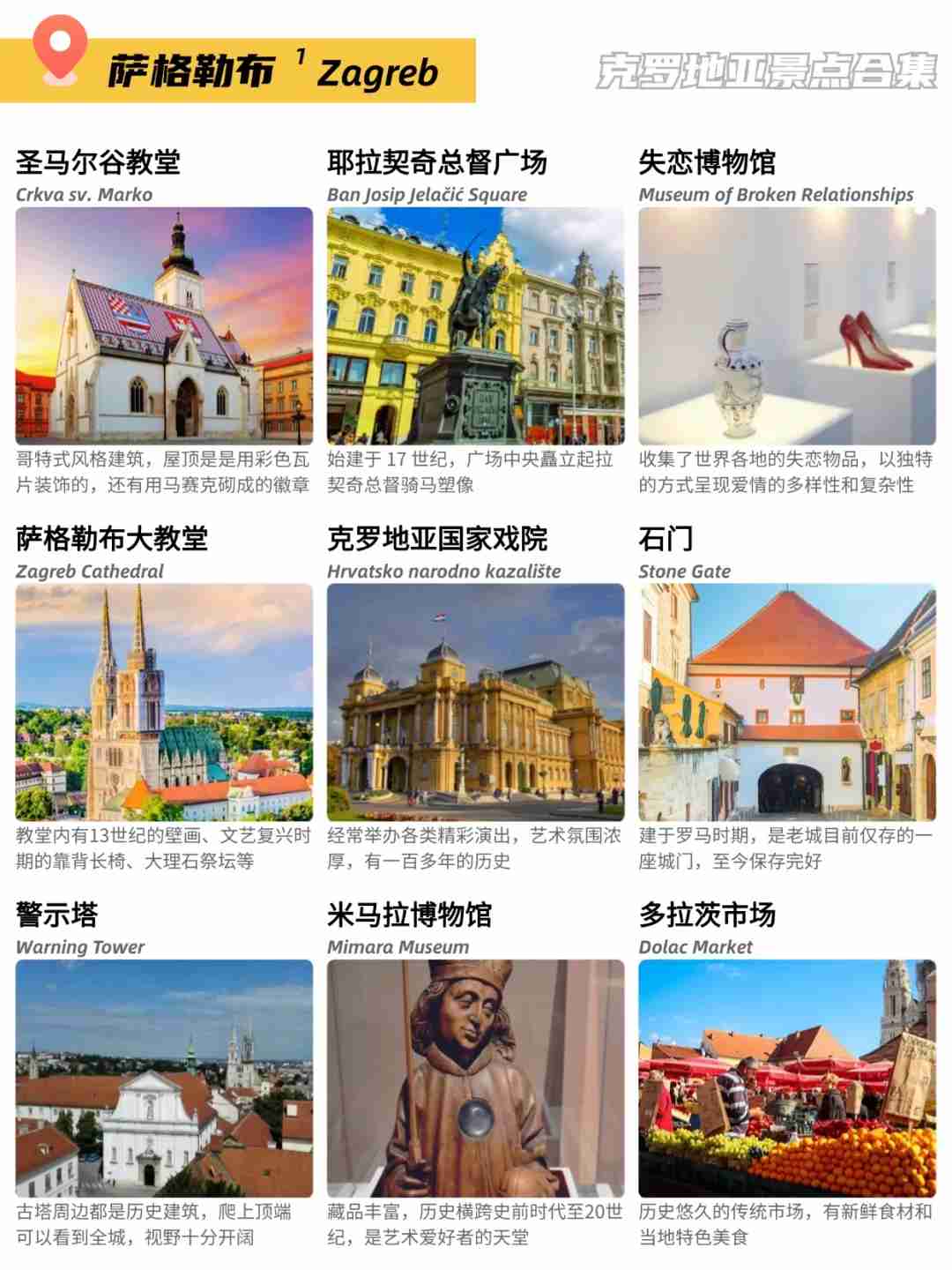
[Zagreb] Zagreb: The cultural heart of Croatia, where a modern urban vibe seamlessly blends with the charm of traditional architecture. This vibrant city is a treasure trove of art and history, offering a rich tapestry of experiences.
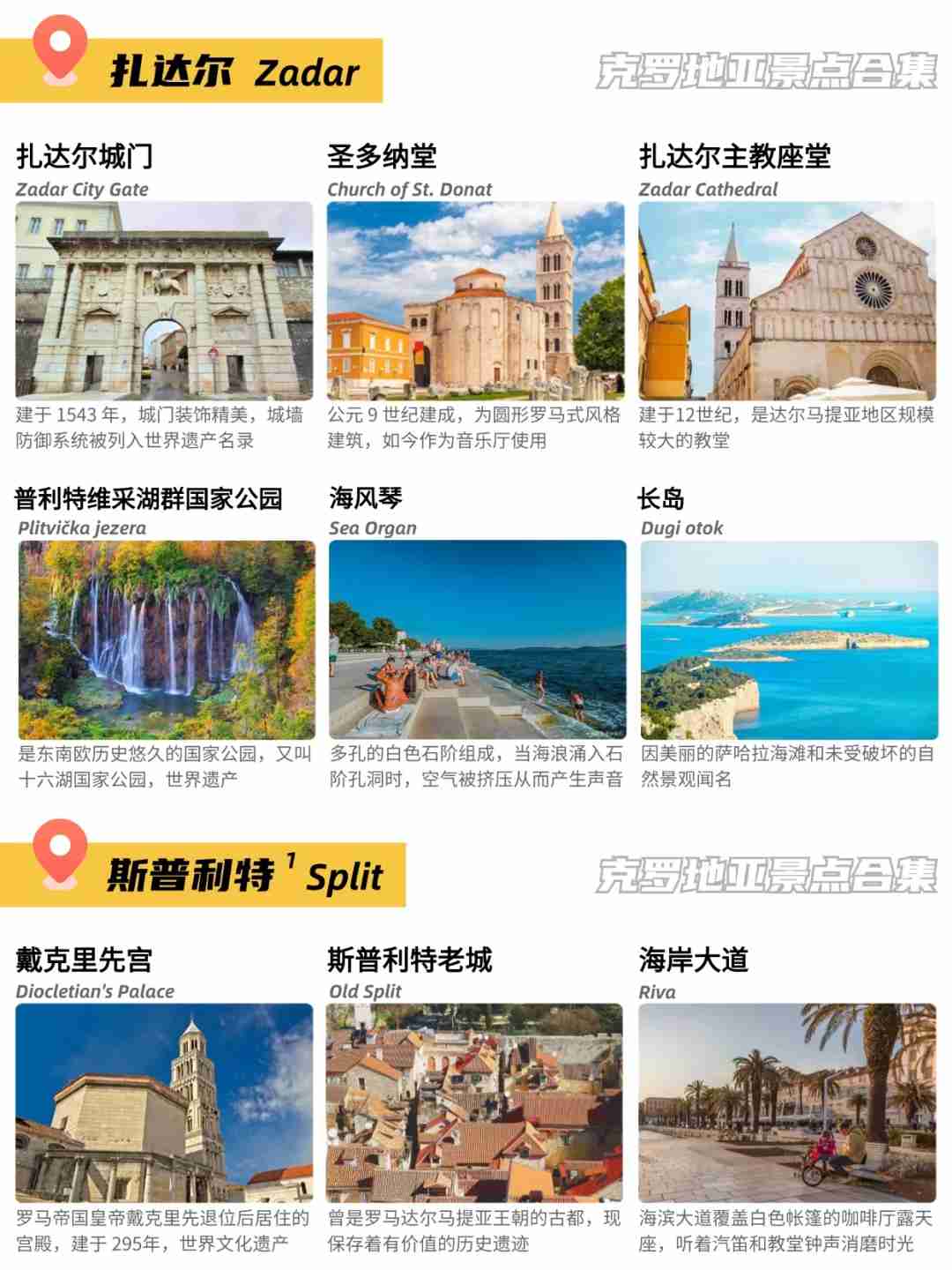
[Rijeka] Rijeka: A dynamic city steeped in maritime and port culture, where the past and present converge. Rijeka’s streets are a canvas of history and art, making it a captivating destination for those who love to explore.

[Rovinj] Rovinj: Nestled on the Mediterranean coast, this romantic small town is a picturesque haven. Its colorful buildings and enchanting sea views create a serene atmosphere, perfect for unwinding and savoring a slower pace of life.
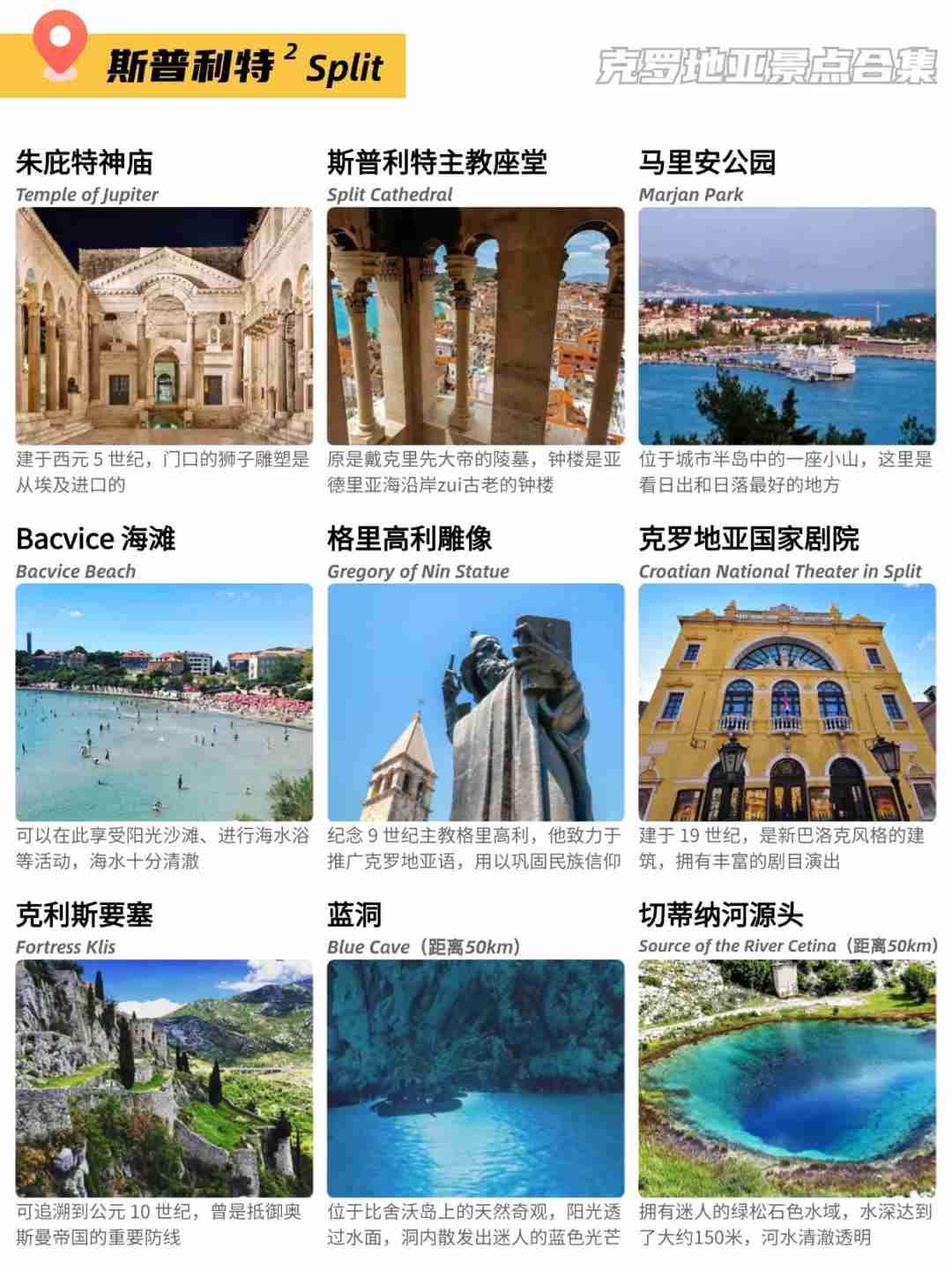
[Pula] Pula: A renowned historical and cultural gem, Pula is a living testament to the Roman Empire. With its well-preserved architectural remains, the city exudes a timeless, classical allure that transports visitors back in time.
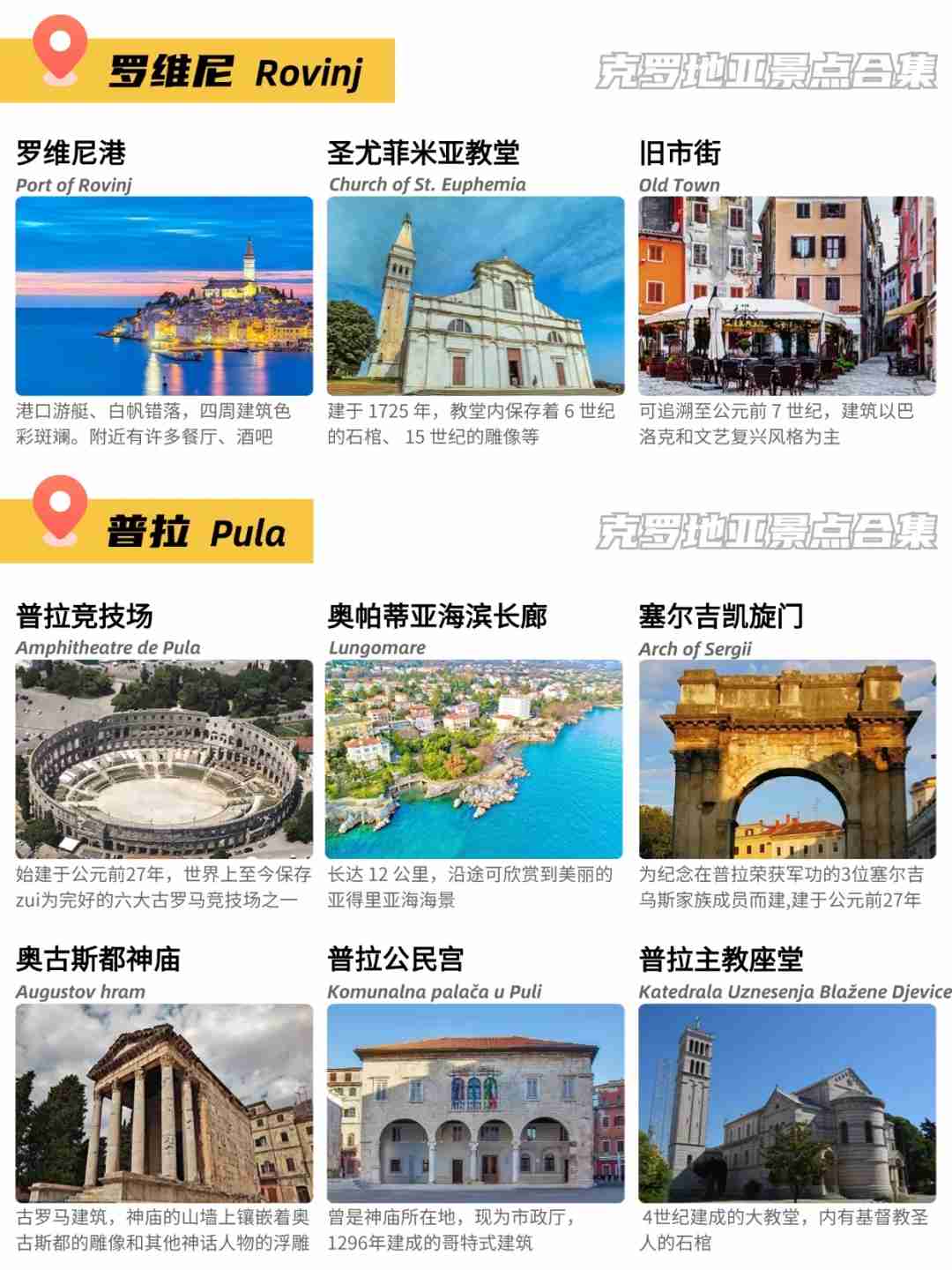
[Zadar] Zadar: A harmonious blend of modernity and tradition, Zadar captivates with its unique coastal scenery and lively cultural scene. The city’s innovative attractions and rich heritage make it a must-see destination.
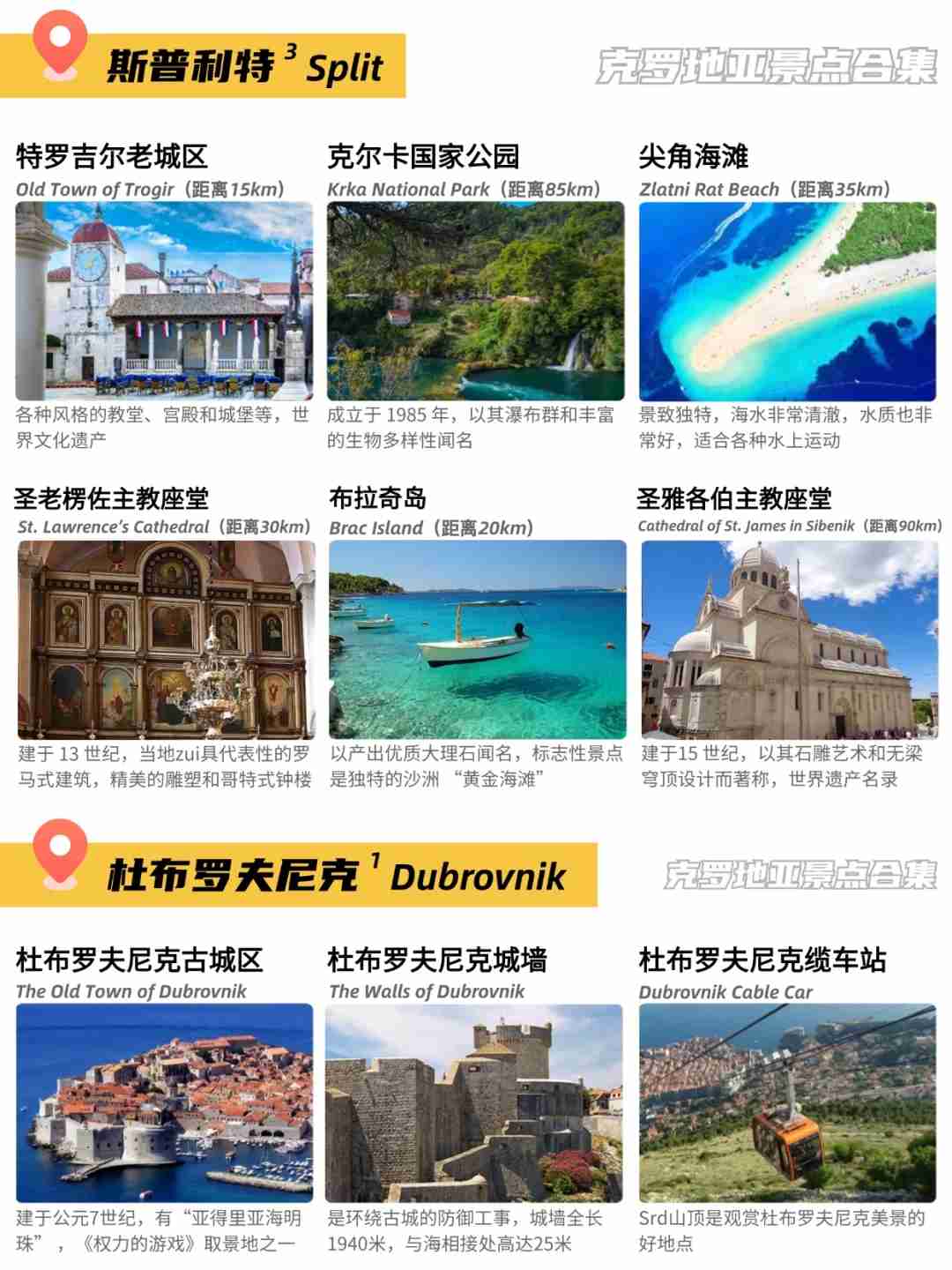
[Split] Split: Where the old and new coexist, Split offers a distinctive Adriatic charm. This historic city is home to a wealth of historical sites, inviting you to explore its rich past while enjoying its contemporary flair.

[Dubrovnik] Dubrovnik: Known as the “Pearl of the Adriatic,” Dubrovnik is a stunning medieval old town with breathtaking views of the Adriatic Sea. Its well-preserved walls and scenic beauty make it a highly scenic and culturally enriching destination.
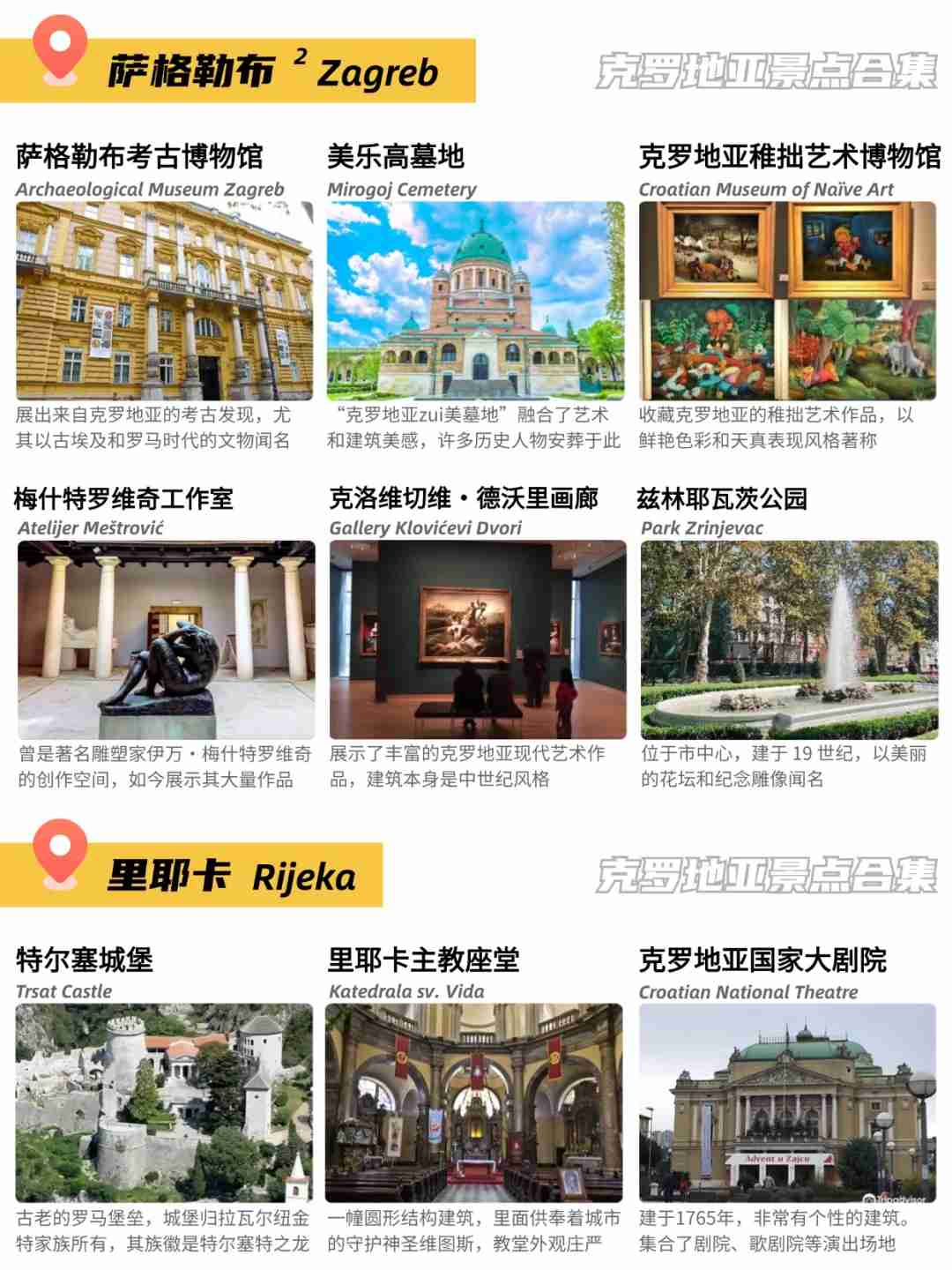
[Suggested number of days for visiting]: Zagreb 2 days, Rijeka 1 day, Rovinj 1 day, Pula 2 days, Zadar 2 days, Split 3 days, Dubrovnik 3 days
[Currency] Starting January 1, 2023, Croatia officially adopted the euro as its official currency, gradually phasing out the kuna. It is advisable to carry some cash, especially in smaller towns. In the service industry, such as restaurants and cafes, a tip of 10-15% is customary. Some establishments automatically add a service charge to the bill, so be sure to check before paying.
[Language] Croatian is the official language, but in major tourist areas and large cities like Dubrovnik and Zagreb, English is widely spoken, making it easy for visitors to communicate.
[Transport]
– Croatia’s railway system is relatively basic, while bus routes are more extensive and convenient for touring multiple cities.
– In larger cities like Zagreb and Dubrovnik, buses and trams are the primary forms of public transportation. You can purchase single or multi-day tickets at ticket machines located at stations or convenience stores.
– For self-driving tours: In Croatia, you drive on the right side of the road, and an international driver’s license or a valid translation of your driver’s license is required. Driving through the scenic landscapes of Croatia can be a delightful and flexible way to explore the country.
[Food] Traditional Croatian cuisine is a delightful fusion of Mediterranean flavors and Balkan specialties. Must-try dishes include octopus stew (Peka), grilled meat skewers (Ćevapi), and black risotto (Crni rižot). Each dish offers a unique taste of Croatia’s culinary heritage, making every meal a memorable experience.